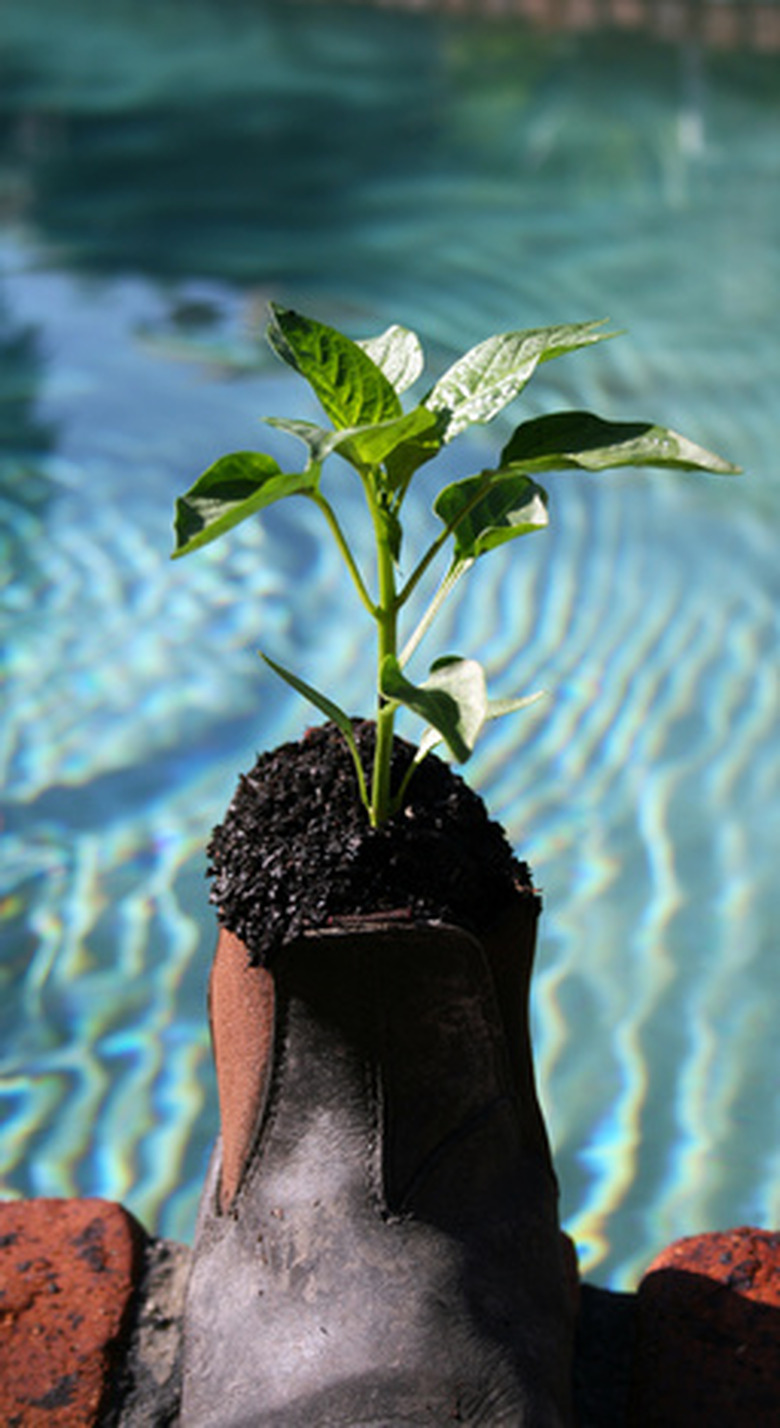Tree Seedling Identification
If you see a seedling in your garden that looks substantial enough to be a tree, you might wonder what it is and whether it would be worth transplanting. The problem with seedlings is that they lack flowers and fruit, the main features botanists used to classify plants. Close examination of trees around you will give you some good clues — leaf and stem characteristics that can point you in the right direction.
Leaf Types
The first leaves any seed sends up are called cotyledons and they are different from the ordinary leaves in shape and size. Seedlings should be about 1 foot tall and have six to eight true leaves before you attempt identification. Note first whether your plant has needle-like leaves like a pine or broad leaves like a maple or holly. Needle-like leaves may be long or scale-like, each typical of a certain type of tree. If your seedling has broad leaves, notice whether they seem thin (probably deciduous), or thick and waxy (probably evergreen).
- If you see a seedling in your garden that looks substantial enough to be a tree, you might wonder what it is and whether it would be worth transplanting.
- If your seedling has broad leaves, notice whether they seem thin (probably deciduous), or thick and waxy (probably evergreen).
Leaf Shapes
Botanists have many terms for leaf shapes, from obovate, tear-drop shaped, to flabellate, fan-like. Notice both the shape and the texture of the leaves. Some have serrated edges, some have prominent veins, some have slightly hairy surfaces. Each of these characteristics is a hint at the identity of your seedling.
Leaf Attachment
One of the most important characteristics of leaves is the way they are arranged on a stem. Some are placed in twos, directly opposite each other. Other species may have four or five of them placed in a whorl around a single point on a branch. Others are arranged alternately. In looking at evergreens, count the needles that spring from a single point. Spruce have needles attached by short stems that give the older branches a rough texture. Yews have needles that are pressed against the stem for a short distance.
- Botanists have many terms for leaf shapes, from obovate, tear-drop shaped, to flabellate, fan-like.
- Other species may have four or five of them placed in a whorl around a single point on a branch.
Stem and Bark Characteristics
The shape of a young stem or twig is often unique to a particular tree. Though the bark changes as it matures, features such as small dots or hairiness are diagnostic. Note also the shape of the dormant buds along the stem. Some trees have pointed buds, some are rounded, others are so small you can hardly see them.
Branching Pattern
Your seedling may be too small to have many branches, but if it does, whether the branches are alternate or opposite is important. Notice whether the young trunk is inclined to branch low or seems to have a strong main stem, a leader.
